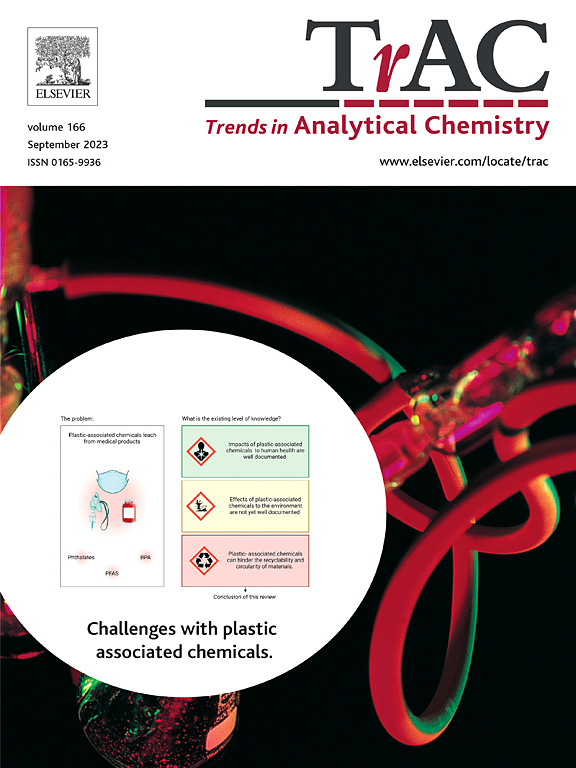A paradigm shift in sample preparation using sustainable membrane phases: Hype or reality?
IF 12
1区 化学
Q1 CHEMISTRY, ANALYTICAL
引用次数: 0
Abstract
In the field of sample preparation, a vast amount of effort over the past decade has been geared toward the development of sustainable liquid and sorptive phases with green credentials and practicality to solve analytical challenges. Notwithstanding the main types and formats of biodegradable and renewable materials encompass bead and solid-fiber type arrangements, sustainable materials are readily amenable to membrane-based microextraction. In this manuscript, the role of biomembranes and biomembrane composites incorporating nanostructured materials, biomolecules and hydrophobic natural solvents for the isolation and preconcentration of organic and inorganic pollutants based on thin film microextraction, supported liquid-phase microextraction and electromembrane extraction is discussed in detail. Insights into the physicochemical properties that endow these biomembranes with unique features for extraction procedures in environmental, food, and biological matrices along with challenges to make them competitive in terms of analytical properties against synthetic polymer phases are highlighted. The potential of integrating planar biomembranes in automatic flow systems and performing on-site screening protocols with chromogenic polymeric membranes is also underscored.

使用可持续膜相制备样品的范式转变:炒作还是现实?
在样品制备领域,在过去的十年中,大量的努力已经面向可持续的液体和吸附相的发展,具有绿色证书和实用性,以解决分析挑战。尽管可生物降解和可再生材料的主要类型和形式包括头和固体纤维类型的安排,可持续材料很容易适应基于膜的微萃取。本文详细讨论了纳米结构材料、生物分子和疏水天然溶剂组成的生物膜和生物膜复合材料在薄膜微萃取、支撑型液相微萃取和电膜萃取的基础上对有机和无机污染物的分离和预富集的作用。深入了解这些生物膜在环境、食品和生物基质提取过程中的独特特征,以及使其在合成聚合物相的分析性能方面具有竞争力的挑战。在自动流动系统中集成平面生物膜和用显色聚合物膜进行现场筛选方案的潜力也得到了强调。
本文章由计算机程序翻译,如有差异,请以英文原文为准。
求助全文
约1分钟内获得全文
求助全文
来源期刊

Trends in Analytical Chemistry
化学-分析化学
CiteScore
20.00
自引率
4.60%
发文量
257
审稿时长
3.4 months
期刊介绍:
TrAC publishes succinct and critical overviews of recent advancements in analytical chemistry, designed to assist analytical chemists and other users of analytical techniques. These reviews offer excellent, up-to-date, and timely coverage of various topics within analytical chemistry. Encompassing areas such as analytical instrumentation, biomedical analysis, biomolecular analysis, biosensors, chemical analysis, chemometrics, clinical chemistry, drug discovery, environmental analysis and monitoring, food analysis, forensic science, laboratory automation, materials science, metabolomics, pesticide-residue analysis, pharmaceutical analysis, proteomics, surface science, and water analysis and monitoring, these critical reviews provide comprehensive insights for practitioners in the field.
 求助内容:
求助内容: 应助结果提醒方式:
应助结果提醒方式:


